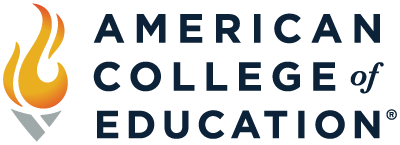
Introduction to Scholarly Writing
I completed college as a first-generation graduate, and upon graduation, I knew one of my interests was to help students understand the academic language that seemed so confusing when I enrolled in an English composition course during my freshman year.
However, something that seemed challenging has blossomed into something I now enjoy doing as a college faculty member. I have taught numerous writing courses, and I implement teaching scholarly writing across all my course subjects.
As an educator, my goal is to help students navigate writing resources and improve their professional writing skills to support their career journey. Being skilled in scholarly writing also creates the potential for career opportunities.
What is Scholarly Writing?
Scholarly writing refers to writing with the purpose of sharing knowledge and creating a reputable source of information. This intentional form of writing is concise and direct for clarity. It also must be original. Scholarly writers should avoid repeating what other authors have already published. Additionally, they should never use clichés, as they are overused expressions that are not original.
American College of Education’s (ACE) Writing Center lists three attributes to scholarly writing, which are:
- Generating strong claims for our insights and arguments
- Incorporating sources as evidence to support our ideas
- Contributing new ideas to larger scholarly conversations
Scholarly Writing at ACE
Scholarly writing is integral in all of ACE’s courses. In college and university settings, student authors communicate their ideas through academic writing and projects. They demonstrate their knowledge and understanding of the subject matter through various assignments. However, in scholarly writing, we should provide evidence to inform readers how we know what we know. We do so by using in-text citations. At ACE, we use the American Psychological Association’s formatting style, commonly known as APA, to format in-text citations and their matching references.
Peer-Reviewed Articles
The most credible type of academic literature is the peer-reviewed journal article. Scholarly and peer-reviewed journals or published articles are written by subject matter experts and reviewed and scrutinized by other subject matter experts in the same field who either accept or deny a proposed article for publication. This process is called a blind review, in which the author is not aware of who the peer reviewers are; however, the peer reviewers are aware of the author(s).
Wiley, an American multinational publishing company, notes on their Author Services webpage that the review process assesses “the validity, quality and often the originality of articles for publication. It is the foundation for safeguarding the quality and integrity of scholarly research.”
Other Types of Scholarly Publications
Students should know that scholarly articles aren’t always peer-reviewed. Many instructors require students to include peer-reviewed articles as references in their weekly assignments; however, students should also explore other scholarly sources to increase their expertise and gain multiple perspectives on a topic.
Such sources include books by seminal authors, case studies developed for learning, white papers, government publications, conference papers, educational websites and trade publications.
Why Scholarly Writing is Important
Some might assume scholarly writing is pertinent only to higher education; however, it’s a standard form of communication across industry sectors like healthcare, education, social sciences and more. It’s critical for individuals who want to earn terminal degrees to advance in their fields, such as secondary educators, law enforcement, social workers, etc.
Nonprofit organizations also heavily rely on scholarly writing in developing grant proposals, which are essential for their financial sustainability. Additionally, having a strong scholarly writing foundation will support those seeking employment, as the skills can be applied to writing cover letters, personal statements and other application requirements.
What is a Scholarly Article?
What constitutes a scholarly article is a few key attributes. They’re written by experts seeking to impart knowledge and offer research in an area that hasn’t been explored before. Oftentimes, they’re targeted at a specific field and are seen as reputable due to the intensive peer review process.
Accessing Scholarly Sources
Scholarly writing also requires intentional reading and analysis. Further, writers must know how to access scholarly sources. At ACE, students can access scholarly sources through the ACE Library. Across the United States, college and university libraries subscribe to academic journals to ensure students have access to quality literature for their learning and research. Journal subscriptions can be expensive, with some costing thousands of dollars.
However, some sources are available for free through a system called open educational resources (OER). The nonprofit organization, OER Commons is popular for accessing and publishing scholarly literature.
Tips for Scholarly Writing
Reading academic literature is a great first step to developing scholarly writing skills. This style of writing is different from what’s found in popular sources, such as fictional books, magazines and newspaper articles. Reading scholarly literature helps students become familiar with tone, word choices and sentence structure.
Proofreading and revision are expected steps in the scholarly writing process. Writers should expect to receive critical feedback and be open to making revisions. This process ensures the credibility of the writing and is a vital step in developing subject matter expertise.
Reflection and critical thinking are also recommended in the scholarly writing process. I often advise doctoral students to spend a day thinking about their research and take notes on their thoughts. Scholarly writers must contemplate ideas, analyze sources and reflect on their learning to know what to write about. Authors should be critical and systematic thinkers as well as thoughtful observers.
As I mentioned earlier, scholarly writing is a form of communication used to share knowledge. Knowledge is developed through research, observation, experience and practice, which are all part of the scholarly writing process. Therefore, this style of writing requires dedication and time; however, the hard work is worth it.
Tools for Scholarly Writing Support
ACE students have access to helpful scholarly writing tools. Two tools I recommend are Tutor.com and Turnitin’s Draft Coach. Every ACE student has 7.5 monthly hours for Tutor.com’s 24/7 student support services. Tutor.com assists with developing a thesis statement, identifying a paper’s central themes and writing in an academic tone. Students gain valuable feedback on documents, presentations and other projects, such as developing infographics and writing executive summaries.
Turnitin’s Draft Coach is a writing assistant tool that assists students with quality and originality. Students can check originality before submitting their work. This tool also identifies areas that require in-text citations.
Turnitin is a third-party tool integrated into all of ACE’s courses that checks students’ submissions for academic integrity. This is a critical component and expectation of scholarly writing. Authors who violate academic integrity in the professional world are often terminated or forced to resign.
All to say, scholarly writing is a valuable and integral contributor to not only academia, but global efforts that make the world a better place. Researchers and scholarly authors offer sources of information that can initiate positive change and innovative growth in any sector.
Advance your education with the high-quality, fully online and affordable programs at American College of Education.

